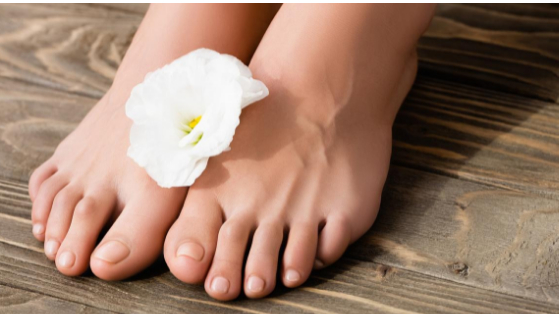
The corner or side of a toenail grows into the tender flesh, a condition known as an ingrown toenail. As a result, there is discomfort, swollen, irritated skin, and occasionally an infection. The big toe is the one that is typically affected by ingrown toenails.
Ingrown toenails are frequently treatable by yourself. Your healthcare practitioner can help you reduce your discomfort and prevent ingrown toenail issues if the pain is severe or spreading.
You are more likely to experience ingrown toenail issues if you have diabetes or another condition that reduces the blood supply to your feet.
Symptoms
Ingrown toenail show the following symptoms:
- Pain or tenderness
- Inflamed skin
- Swelling
- Infection
Causes
The causes of an ingrown toenails are:
- Wearing shoes which are tight and cramp the toenails
- Cutting toenails extra short and uneven
- Injuring your toenail
- Having extra curved toenails
- Nail infections
- Certain medical conditions
What Makes You Susceptible To Ingrown Toenails?
- Being a teenager causes feet to perspire more, softening the nail and skin.
- Cutting nails excessively short
- Being less able to take care of your nails
- Wearing footwear that limits your toes
- Engaging in motions that put your toes at danger of harm, such as sprinting and kicking
- Having a disease that reduces blood flow, such as diabetes
Can Ingrown Toenails Cause Complications?
If you have diabetes, which can result in inadequate blood flow and damaged nerves in the foot, complications can be particularly severe. Therefore, a minor foot injury such as a cut, scrape, corn, callus, or ingrown toenail may not heal appropriately and end up getting infected.
Prevention
Straight across nail trims are best. Never shape your nails to resemble the front of your toe. Ask the person giving you a pedicure to cut your nails straight across. Visit a podiatrist periodically to have your nails cut if you suffer from a condition that prevents enough blood flow to your feet and you are unable to trim your nails.
The pressure from your shoes on your toes may cause a nail to grow into the tissue if you cut your toenails too short.
Put on shoes that are comfortable. A nail may grow into nearby tissue if your shoes are excessively tight or press against your toes. You might not be able to tell whether your shoes are excessively tight if you have nerve damage in your feet.
Put on safety footwear. Wear protective shoes, such as steel-toed shoes, if your activities put you at danger of toe injuries.
Examine your feet. Check your feet every day for indications of ingrown toenails or other foot issues if you have diabetes.
Who Treats Ingrown Toenails?
If you’ve ever wondered who treats ingrown toenails, here’s your answer – we do! Podiatrists are the best people to see when it comes to any issue related to your feet, including ingrown toenails. We can treat your ingrown toenail before it turns into a nasty infection and save you a lot of stress, and money in the future.
How To Treat An Ingrown Toenail
- lift the nail just a little bit. Your doctor may gently remove the edge of the ingrowing nail for a mild ingrown nail and place cotton, dental floss, or a splint underneath. This helps the nail develop over the skin’s edge and separates it from the skin above, usually taking two to twelve weeks. You’ll have to wet the toe and change the material every day at home. Additionally, your doctor can advise using a corticosteroid cream after soaking.
- Taping the nail. This method involves applying tape to the ingrown nail and pulling the skin away from it.
- using a gutter splint as support under the nail. Your doctor will numb the toe and insert a small tube with a slit underneath the embedded nail using this technique. Up until the nail has grown above the skin’s edge, this splint remains in place. This technique also lessens the discomfort caused by an ingrown nail.
- removing the tissue and nail. Your doctor could advise removing a part of the nail and the underlying tissue if you experience the issue on the same toe repeatedly (nail bed). This technique might stop the nail’s growth in that area. Your doctor will use a chemical, a laser, or other techniques to numb the toe.
Conclusion
Here at Bucksfoot Clinic we have a reputation for results. With a little assistance and guidance from our years of experience, we can assure you a speedy recovery from your discomfort.
